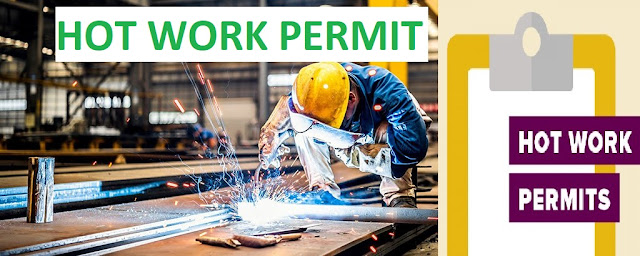Hot Work
Job work involving burning, welding, or a similar
operation that is capable of initiating fires or explosions.
Activity involving flame, spark production, or heat.
Welding and allied processes include arc welding, oxy–fuel
gas welding, open-flame soldering, brazing, thermal spraying, oxygen cutting,
and arc cutting.
Hazards of Hot Work
Hot work has the potential to unite all three parts of the fire triangle: oxygen, fuel, and an ignition source.
Oxygen is present in the ambient air. Unsafe practices involving pure oxygen can cause oxygen enrichment (over 22 percent by volume) in the workplace.
Fuel includes anything that can be ignited. Examples of
common fuels include the following:
• Construction materials such as wood, plastic,
insulation, roofing materials, including those in concealed spaces
• Flammable and combustible liquids or gases such as fuel,
paint, cleaning solvents
• Simple combustibles such as rags, paper, cardboard, lumber, furnishings Ignition sources can be as simple as the hot work itself.
Ignition results when any heat source sufficient to ignite a fuel does so. It can occur through the direct or indirect application of heat. Direct application of heat includes: welding, cutting and burning. Indirect application includes heat conducted through metal surfaces to fuel sources on the other side (e.g., through to the other side of a bulkhead) and sparks travelling to a distant fuel source (e.g., to a pool of liquid or other combustible material).





Thanks for sharing..
ReplyDeleteVery useful